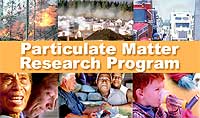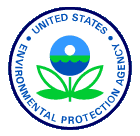Research & Development – News
Children's Environmental Exposure Research Study (CHEERS)
|
To provide a safe and healthy environment for children, the U.S. Environmental Protection Agency and its collaborators are launching a landmark study in Duval County, Florida, to learn more about how young children come into contact with household pesticides and other chemicals in their homes. read more
|
Protecting Children’s Health: An Alternative Technology for Reducing Risk from Lead in Soil
|
 EPA soil scientists, in cooperation with other researchers, have developed an innovative treatment that converts the harmful form of lead found in soil into an environmentally stable and biologically inert mineral, and does it on site with minimum disruption and at lower cost. read more | en español EPA soil scientists, in cooperation with other researchers, have developed an innovative treatment that converts the harmful form of lead found in soil into an environmentally stable and biologically inert mineral, and does it on site with minimum disruption and at lower cost. read more | en español
|
EPA Provides Methods for Studying Genetically Modified Pollen
|
 A recent issue of the journal Proceedings of the National Academy of Sciences reports the results of a study on the ability of a genetically modified (GM) grass, bentgrass, to transfer its genes in the environment. In this study EPA scientists in Corvallis, Oregon, tracked the transfer of genes from experimental plots of GM bentgrass to native grass. Results showed genes from the genetically modified bentgrass were transferred as far as 13 miles from the experimental plots though most gene transfer occurred within 2 miles of the experimental plots. read more A recent issue of the journal Proceedings of the National Academy of Sciences reports the results of a study on the ability of a genetically modified (GM) grass, bentgrass, to transfer its genes in the environment. In this study EPA scientists in Corvallis, Oregon, tracked the transfer of genes from experimental plots of GM bentgrass to native grass. Results showed genes from the genetically modified bentgrass were transferred as far as 13 miles from the experimental plots though most gene transfer occurred within 2 miles of the experimental plots. read more
|
EPA Recognized as Family-Friendly Place to Work in North Carolina
|
The U.S. Environmental Protection Agency's campus in Research Triangle Park , N.C. has made the top 40 list of family-friendly places to work by Carolina Parenting, Inc. a magazine publisher in North Carolina. read more
|
Water — The Resource With Many Lives
|
In 1980, EPA published the first edition of Guidelines for Water Reuse. The 2004 Guidelines for Water Reuse includes public health issues, state requirements and problems of emerging pathogens and chemicals of concern. But the basic objectives of the document remains the same: to make water managers and resource planners aware of the proven practices of water reclamation. read more
|
Environmental Influences on the Induction and Incidence of Asthma Workshop
|
The Environmental Protection Agency and the National Institute of Environmental Health Sciences are sponsoring a workshop, Environmental Influences on the Induction and Incidence of Asthma, to be held on the EPA campus in Research Triangle Park, N.C., October 18-19, 2004. The meeting features speakers who are world renowned experts in the field. For a complete agenda and other information visit the Asthma Workshop Web site. read more
|
Studying Our Nation's Great Rivers
|
 EPA has embarked on one of the most comprehensive scientific surveys ever to be conducted on three great rivers that will provide the tools needed to help states better manage and protect these important national resources. This survey will provide the information needed to check the health status of the Missouri, Mississippi, and Ohio Rivers, three major waterways that link the upland streams of the Central Basin to the Gulf of Mexico read more EPA has embarked on one of the most comprehensive scientific surveys ever to be conducted on three great rivers that will provide the tools needed to help states better manage and protect these important national resources. This survey will provide the information needed to check the health status of the Missouri, Mississippi, and Ohio Rivers, three major waterways that link the upland streams of the Central Basin to the Gulf of Mexico read more
|
EPA Awards Research Fellowships
|
 To help educate America’s future environmental scientists, Dr. Paul Gilman, EPA Science Advisor and Assistant Administrator for Research and Development today announced the award of 156 research fellowships for students pursuing degrees in environmental studies. Chosen after their applications underwent a rigorous review process, the selected fellows represent 95 universities in 40 states. read more To help educate America’s future environmental scientists, Dr. Paul Gilman, EPA Science Advisor and Assistant Administrator for Research and Development today announced the award of 156 research fellowships for students pursuing degrees in environmental studies. Chosen after their applications underwent a rigorous review process, the selected fellows represent 95 universities in 40 states. read more
|
Particulate Matter Research Program: Five Years of Progress
|
 This report highlights early results of EPA's substantial investment in particulate matter research by EPA scientists and grantees from universities and other research institutions across the country. The report also includes an in-depth examination of the health effects, exposure and prevention or mitigation of PM2.5. read more This report highlights early results of EPA's substantial investment in particulate matter research by EPA scientists and grantees from universities and other research institutions across the country. The report also includes an in-depth examination of the health effects, exposure and prevention or mitigation of PM2.5. read more
|
Federal Sustainability Summit
|
 Recently, a summit meeting of federal managers was convened by EPA Research and Development, Office of the Federal Environmental Executive and International Centre for Leadership Results, Gettysburg College. For more information on the summit including session data, project results and participant contact information please visit the Federal Sustainability Summit Web site. Recently, a summit meeting of federal managers was convened by EPA Research and Development, Office of the Federal Environmental Executive and International Centre for Leadership Results, Gettysburg College. For more information on the summit including session data, project results and participant contact information please visit the Federal Sustainability Summit Web site.  To view more information on EPA’s sustainability program, please visit EPA's Sustainability Web site. read more To view more information on EPA’s sustainability program, please visit EPA's Sustainability Web site. read more
|
Global Earth Observation System of Systems (GEOSS)
|
In July 2003, the United States hosted the Earth Observation Summit. The summit brought together 33 nations plus the European Commission to adopt a declaration that signified a political commitment toward the development of a comprehensive, coordinated and sustained Earth Observation System to collect and disseminate improved data, information, and models to stakeholders and decision makers. read more
|
|


